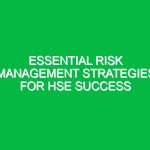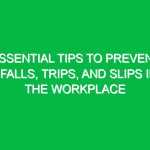Welcome team, today we are here to discuss an important topic that directly impacts our health, safety, and environment (HSE) practices – Chainsaw General Safety. As we all know, chainsaws are powerful tools that can make our work more efficient but also pose significant risks if not handled correctly. By understanding and following essential safety guidelines, we can ensure a safe work environment for ourselves and our colleagues.
The Importance of Chainsaw General Safety
Chainsaw safety is crucial in preventing accidents and injuries in the workplace. By adhering to safety protocols, we not only protect ourselves but also contribute to a culture of safety within our organization. Safety should always be our top priority when operating chainsaws, as even a moment of carelessness can lead to severe consequences.
Key Aspects of Chainsaw General Safety
- Proper Training: Before using a chainsaw, ensure that you have received adequate training on its safe operation. Understanding the tool and its components is essential for safe usage.
- Personal Protective Equipment (PPE): Always wear the necessary PPE, including a helmet, gloves, eye protection, and chainsaw chaps, to protect yourself from potential injuries.
- Regular Maintenance: Keep your chainsaw well-maintained and sharp. A dull chain can increase the risk of kickback and accidents.
- Safe Operation: Follow the manufacturer’s guidelines for operating the chainsaw. Avoid cutting above shoulder height and always maintain a firm grip on the tool.
Potential Hazards and Risks
When using a chainsaw, it’s essential to be aware of the potential hazards and risks involved. Kickback, chain breakage, and improper handling are common causes of accidents. Always be cautious and alert while operating a chainsaw to minimize the risks associated with this tool.
Best Practices for Chainsaw Safety
Here are some best practices to ensure chainsaw safety:
- Plan Your Work: Assess the cutting area for any obstacles or hazards before starting work.
- Establish a Safe Zone: Clear the work area of debris and ensure there are no bystanders nearby.
- Follow a Buddy System: When possible, work with a colleague who can assist in case of an emergency.
Regulations and Standards
It’s important to comply with all relevant regulations, standards, and company policies related to chainsaw safety. By following these guidelines, we not only ensure our safety but also fulfill our legal obligations in maintaining a safe work environment.
Conclusion
As we conclude this Toolbox Talk on Chainsaw General Safety, remember that safety is everyone’s responsibility. By prioritizing safety and following the guidelines discussed today, we can create a work environment that is safe for all. Thank you for your attention and commitment to safety. Stay safe!


